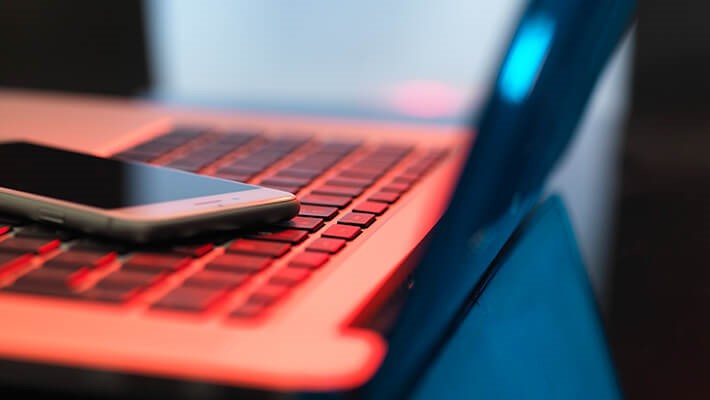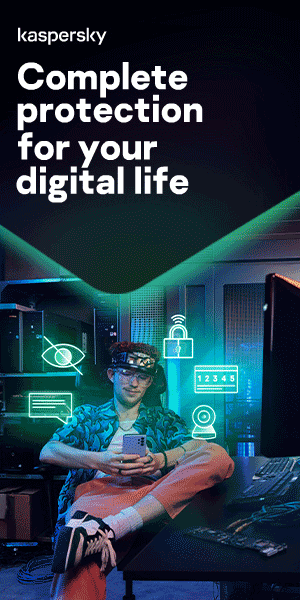
Jailbreaking is the process of exploiting the flaws of a locked-down electronic device to install software other than what the manufacturer has made available for that device. Jailbreaking allows the device owner to gain full access to the root of the operating system and access all the features. It is called jailbreaking because it involves freeing users from the ‘jail’ of limitations that are perceived to exist.
What is jailbreaking?
The term jailbreaking is most often used in relation to the iPhone: it is considered the most ‘locked down’ mobile device currently on sale. Early versions of the iPhone did not have an app store, and the iOS interface was considered more limited for users than it is today. In the US, the first iteration of the iPhone was only on AT&T’s network and users who wanted to access other carriers were not able to unless they had a jailbroken iPhone.
Watch this video about jailbreaking to learn if iPhone jailbreaking is worth it and how to fix the already jailbroken iPhone:
Apple’s ‘walled garden’ approach to its software has always been in contrast to the variety of options provided by the Android OS for customization. A key motivation of many jailbreakers is to make iOS more like Android. Jailbreaking was – and remains – a way to install apps that Apple has not approved and a way to customize the interface.
Since the term first appeared, jailbreaking has also been used to refer to adapting the code on other devices, from phones to games consoles. People sometimes use it to refer to installing custom software on mobiles or removing Digital Rights Management (DRM) restrictions on movies. However, the term usually refers to Apple products. Aside from the iPhone, jailbreaking can also refer to the iPad and iPod Touch.
Jailbreaking is sometimes used interchangeably with the terms “cracking” (in relation to software) and “rooting” (in relation to phones). Rooting can be described as the Android version of a jailbreak since it aims to bypass protections put in place by manufacturers to install alternative mobile operating systems. People also jailbreak Amazon Firesticks and Roku streaming boxes to run media software, which they prefer to the built-in apps, and Nintendo Switches to run emulated games.
Jailbreaking does not change the device's core features, and a jailbroken iPhone or iPad can still purchase and download apps from Apple's App Store. However, to download apps that Apple rejected or leverage the additional features jailbreaking provides, jailbroken devices rely on independent app stores. The most popular of these is Cydia, a storefront for jailbroken iOS devices, which is usually installed during the jailbreaking process.
Jailbreak code is usually provided for free through forums and sites by hacking communities who want to promote unrestricted device use. Most jailbreaks come with full instructions and desktop tools to apply the new code, but some technical knowledge is usually helpful.
The terms “tethered” and “untethered” are sometimes used in relation to jailbreaking:
- A tethered jailbreak requires the iOS device to be plugged into a computer when turned on. If the iPhone is not plugged into a computer and booted with special software, the device will not enter a jailbroken state.
- Untethered jailbreaks do not require a computer. Everything required to enter the jailbroken state is contained on the iPhone. Rebooting away from a computer does not affect the jailbreak.
Today, with iPhone apps now given more access to the operating system (OS), jailbreaking has become less popular. Because Apple publicly disapproves of jailbreaking, it has implemented hardware and software fixes to the vulnerabilities used in jailbreaks, meaning that many versions of iOS can’t be jailbroken immediately or easily.
Is jailbreaking legal?
Strictly speaking, jailbreaking is not illegal, but laws vary worldwide, continue to evolve, and are often a grey area when it comes to this topic. While it is legal to jailbreak or root a phone (if you are doing it to install legally acquired apps) that is not the case if you are doing it to install illegally acquired apps.
In the US, jailbreaking falls under the Digital Millennium Copyright Act, which covers digital copyright issues. Section 1201 of the law makes it illegal to circumvent digital locks that protect access to copyrighted works, which can include software. Congress reviews the law every few years and has gradually expanded the list of exempt items. Jailbreaking phones became legal in 2010, followed by smartwatches and tablets in 2015. Since then, more devices have been added to the exemption list, and it continues to evolve as it is reviewed.
Specific laws may vary in jurisdictions around the world. In many countries, jailbreaking has never been tested in court, so the precise legal position may be unclear.
While Apple does not support jailbreaking, the company has generally not legally threatened jailbreakers. In fact, Apple has even been known to thank jailbreak communities for detecting security holes.
Regardless of the law, jailbreaking your phone voids the warranty, so if something goes wrong with your device, you have nothing to fall back on. It also leaves you exposed to a range of security issues, which we discuss below.
Is jailbreaking safe?
While legal, jailbreaking your phone is not necessarily safe. Jailbroken phones offer an opportunity for cybercriminals to hack your phone.
When you jailbreak your phone, you are giving up Apple’s dedication to security. Side loaded apps are not checked and screened via Apple's App Store and therefore represent a security risk. When you jailbreak your phone, you stop receiving iOS updates, including the security updates that Apple releases, leaving you more exposed to the latest security threats.
Apple considers jailbreaking iOS to be a violation of its terms and conditions of use and advises customers that the practice exposes a phone to several risks, including:
- Security vulnerabilities
- Stability issues
- Potential crashes and freezes
- Shortened battery life
This is why Apple warns against jailbreaking your iPhone or any other iOS device. While it is rare for iPhones to get viruses when they do, it is often because the phone has been jailbroken. If something goes wrong with the phone, it is up to you to fix it, because the act of jailbreaking voids your warranty.

It would help if you also considered who owns the device and what information you have on your phone. For example, does your employer own the phone? Is your work email synced to it? Any malicious activity not only puts your data at risk — but your organization's as well. Because jailbroken phones lack sufficient security, you are putting your organization at greater risk of a cyber-attack.
Organizations that provide mobile devices to employees typically have security measures in place to prevent users from putting company data at risk. This may include further locking down phones so only certain features can be added or changed, keeping devices and apps up to date, and installing a mobile device agent that can detect a jailbroken phone.
Jailbreaking – pros and cons
Jailbreaking advantages
More control over your device
Apple aims to provide users with a unified look and feel. For users who find that restrictive and want to customize their phone by adding their own icons, wallpapers, and menus, jailbreaking is the way to do that. You become the administrator of your device with all the relevant rights, rather than Apple or anyone else. For example, you can add extra icons to your iPhone home screen or install your own screensavers. Jailbreaking also gives greater access to the file system and even unlocks communication from another device, which means you can connect your iPad to your PC and have greater control over what you can see and do.
Install and use unauthorized apps
Apple bans various apps from its App Store due to security reasons. Jailbreaking enables you to install apps that are not available from the App Store. Cydia is the most popular storefront for jailbroken phones, allowing you to add unauthorized apps, such as games and networking tools. Retro gaming emulators are also good examples: Apple bans these from its own app store (because they allow you to play older computer games without buying the original copies). However, they are freely available on Cydia.
Remove or delete pre-installed apps
iOS does not allow you to change or delete default apps such as Apple Watch, Weather, Games Center, and so on. These apps take up memory space, which is inconvenient for people who do not use them. Jailbreaking allows you to remove Apple's default apps and use third-party apps instead. So, you can have Siri use Google Maps for directions instead of Apple Maps if you prefer.
Access to additional anti-theft features
Some users believe jailbreaking gives them access to better anti-theft features. For example, the iPhone has a Find My iPhone feature, but this does not work when the phone is on airplane mode, turned off, or offline. There are jailbreak apps that claim to work better than Find My iPhone, such as iCaughtU. When a thief enters the wrong passcode, the front-facing camera takes a photo of the perpetrator and emails it to the owner.
Jailbreaking disadvantages
No more automatic updates
You will no longer receive automatic updates direct from Apple. For each new version of iOS, you will need to wait for the jailbreaking community's appropriate hack. Jailbreaking takes time and has to be done to each version of iOS that Apple releases, meaning that you can’t update your jailbroken phone until the most recent update has been jailbroken — which might not be straight away. The process of jailbreaking after major updates may be more trouble than jailbreaking is worth.
Inability to apply some software updates
Some unauthorized modifications have left iPhones permanently inoperable when Apple-supplied iOS updates are installed.
Voiding the phone’s warranty
Apple states that unauthorized modification of iOS is a violation of the iOS end-user software license agreement. Because of this, Apple may deny service for an iPhone, iPad, or iPod touch that has installed any unauthorized software. So, if your device is damaged or malfunctions after jailbreaking, Apple can refuse any service repairs you request.
Shortened battery life
The hacked software could cause an accelerated battery drain that shortens the operation of an iPhone, iPad or iPod touch on a single battery charge.
You might brick your phone
A bricked phone does not boot, respond to input, or make calls — therefore is as useful as a brick. Jailbreaking in itself does not brick the phone, but the process exposes the phone to risks, which may lead to this.
You can lose access to content or services
The motivation for jailbreaking a phone is often to access more content, but this can sometimes be counterproductive as the user can lose access to other services in the process, such as iCloud, iMessage, FaceTime, Apple Pay, Weather, and Stocks. Third-party apps that use the Apple Push Notification Service have had difficulty receiving notifications or received notifications that were intended for a different hacked device. Other push-based services such as iCloud and Exchange have experienced problems synchronizing data with their respective servers. There have been reports of third-party providers blocking jailbroken devices.
Your phone may be more likely to crash
A jailbroken iPhone or iPad could be more likely to crash. Because apps available for jailbroken devices access features and APIs not available for Apple-approved apps, these features may not be tested as well. They may lead to frequent and unexpected crashes of the device, crashes, as well as freezes of built-in apps and third-party apps, and loss of data.
Unreliable voice and data
Jailbreaking could lead to dropped calls, slow or unreliable data connections, and delayed or inaccurate location data.
Data breaches
A notorious jailbreak hacking incident occurred when hackers gained access to iCloud login information of 225,000 individuals who attempted jailbreak. The hack was facilitated by security vulnerabilities created by jailbreaking, which helped hackers infiltrate users' devices.
You can cause security problems
The closed nature of iOS is designed to be one of the most secure mobile operating systems to protect both your personal information and the system itself. Jailbreaking your phone increases a hackers' risk of stealing your personal information, damaging your device, attacking your network, or introducing malware, spyware, or viruses.
Security risks of jailbreaking
There are security risks to jailbreaking your phone. While jailbreaking gives you more control over your device, it also gives all the apps that run on it more control. The biggest security threats come from allowing these applications to request root access on the device. If malware is installed on the device, it can escalate and gain root access — giving complete access to all data on the device.
Jailbreaking removes Apple's ‘walled garden’ safety,' which is designed to protect users from security threats. Jailbroken phones are much more susceptible to viruses and malware because users can avoid Apple application vetting processes that help ensure users download virus-free apps. Jailbreaking enables software piracy, so apps and games can be distributed for free. This means you are placing your trust in the developers of all the apps you install rather than Apple.
Data from banking apps, stored passwords, and data from social media accounts could be at risk if this information becomes accessible from a jailbroken iPhone. As mentioned above, this risk became apparent when an iOS jailbreak malware called KeyRaider stole 225,000 Apple IDs and thousands of certificates, private keys, and purchasing receipts. Ultimately, victims reported their stolen accounts showed abnormal app purchasing history, and in other instances, phones were locked and held for ransom.
Aside from being at greater risk of malware, jailbroken iPhones are often filled with bugs that could keep crashing your phone and disable other important features. As smartphone usage continues to grow, so too does the risk of mobile crime. That is why it is essential to stay informed about the latest threats and scams, and to have comprehensive mobile security installed on your device.
How to fix a jailbroken phone
You can fix a jailbroken phone by merely restoring your iPhone. You do not need to manually delete the jailbreak apps you installed because the procedure deletes everything from the iPhone, returning the device to Apple’s factory settings.
Before you start, make sure you perform a full backup of your iPhone or iPad. This is because the process of removing the jailbreak will completely wipe your device and restore it to stock configuration. So you will need to back up any files you want to keep beforehand. The best practice is to save your backup file on 2 locations (locally and on the cloud).
Step 1: back up on iCloud:
- Connect your iPhone, iPad, or iPod touch to Wi-Fi.
- Go to Settings, tap on Your Name, and choose iCloud.
- Tap on iCloud backup and make sure the toggle is ON.
- Finally, click on Back Up Now and stay connected to the Wi-Fi network until the process finishes.
If you want to check the progress and confirm if the backup is complete, go to Settings, tap on Your Name, tap on iCloud, and open iCloud backup. Under the button Back Up Now, you can see the time and date of the last backup.
Step 2: reverse the jailbreak by completing the following steps:
- Connect your iPhone or iPad to your PC or Mac using the original USB cable.
- Launch iTunes on your computer.
- Unlock your iDevice and Turn off Find My iPhone.
- Go to Settings, tap on Your Name, and choose iCloud.
- Tap on Find My iPhone and make sure the toggle is OFF. You will need to enter your Apple ID and password to turn this feature off.
- In iTunes on your computer, select your iDevice when it appears.
- In the Summary panel, click on the Restore button. This starts the process of removing the jailbreak.
- During the procedure, your device will restart. It will ask you if you would like to restore from a backup. Here you can select the iCloud option if you want to restore it from the file that you created earlier.
- When the process finishes, your iOS device is back to its factory settings. You will see the usual set-up steps that you had done when you turned on your iDevice for the first time.
If you are unable to restore a jailbroken iPhone for any reason, you can use recovery mode to erase the device.
In conclusion, the vulnerability of apps on jailbroken devices makes it very easy for attackers to steal valuable data, such as payment information. Staying alert to dangers can help to keep you safe online.
Kaspersky Security Cloud provides useful security enhancements for iOS users. These include a built-in VPN that offers to activate itself when it finds the connection is not secure, notifications about relevant security incidents, and a tool that checks for weak system settings. Also useful for mobile security is Kaspersky’s Password Manager and, in the family version, Kaspersky Safe Kids, an advanced parental control tool.
Related articles:


